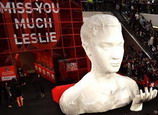
NEW YORK, March 30 (Xinhua) -- The U.S. dollar has advanced against most major currencies in the first quarter of 2013 and market analysts expect the upward trend to continue in the next quarter on relatively strong economy in the United States and loose monetary policies employed by global central banks.
Statistics showed that the dollar rose 3 percent against the euro, 9 percent against the Japanese yen and 4 percent versus British pound in the first quarter.
Survey results by the Bank of America Merrill Lynch Fund manager also showed that investors are increasingly confident in the outlook for dollar.
According to the survey, March registered the highest level of dollar bullishness in the survey's history. A net 72 percent of respondents now expect the U.S. currency to appreciate in the next year, a 30-point increase from a month ago.
"Relative U.S. economic outperformance on the back of the housing market's ongoing improvement and the energy independence will lead a secular uptrend in the dollar," said Michael Hartnett, chief investment strategist at BofA Merrill Lynch Global Research.
In fact, the euro had a strong start against the dollar since the beginning of 2013, rising from 1.32 to a peak in the first week of February of 1.37, while the rate was as low as 1.22.
Euro's bullishness came from eurozone's tighter monetary policy, compared to that in other advanced economies, said Willem Buiter, the chief economist at Citigroup.
Expansionary monetary policy in the United States, Britian and Japan all drive down their currencies' exchange rates, so it's not surprising that the least expansionary monetary policy made the currency rate "uncomfortably strong", said Buiter.

















 Exhibition marks 10th anniversary of Leslie Cheung's death
Exhibition marks 10th anniversary of Leslie Cheung's death


![]()
